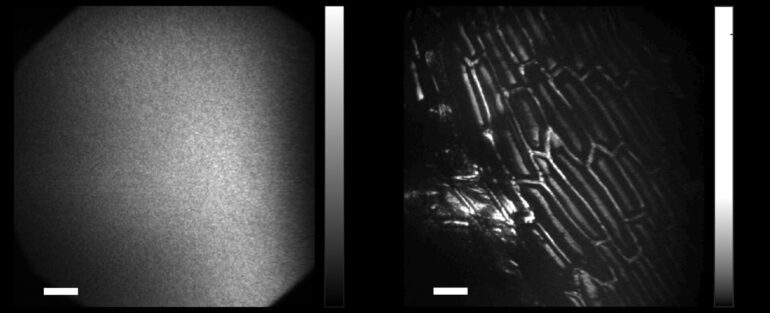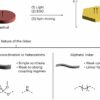A study by researchers from the Institute of Applied Physics at the Hebrew University of Jerusalem, published in Nature Photonics, presents a new method for non-invasive high-resolution imaging through highly scattering media.
The team, led by Prof. Ori Katz, Omri Haim and Jeremy Boger-Lombard, introduces a holography-based computational technique that addresses key challenges in the field of optical imaging and opens new doors for applications in diverse areas such as medical imaging, autonomous vehicles, and microscopy.
The study introduces a guide-star-free approach that eliminates the need for traditional tools such as high-resolution spatial light modulators (SLMs) or extensive measurements, making it possible to image through complex scattering media with unprecedented speed and precision. By computationally emulating wavefront shaping experiments, this new technique optimizes multiple “virtual SLMs” simultaneously, allowing the system to reconstruct high-quality images without requiring prior information about the target or scattering patterns.
Key achievements include:
High versatility and flexibility: This method can correct over 190,000 scattered modes using only 25 holographically captured, scattered light fields obtained under unknown random illuminations. The new technique offers flexibility across various imaging modalities, including epi-illumination, multi-conjugate correction of scattering layers, and lensless endoscopy.
Reduced computational and memory demands: Unlike conventional techniques that require the computation of entire reflection matrices, this innovative approach drastically reduces memory allocation and accelerates the imaging process, enabling faster and more effective correction of complex scattering.
Applications across fields: The study demonstrates the potential for this technique to be applied in diverse areas including biological tissue imaging, multi-core fiber endoscopy, and even acousto-optic tomography. The method also promises to offer solutions in areas such as geophysics, radar, and medical ultrasound.
“We are excited to introduce a new approach in imaging technology that allows for high-resolution imaging through highly scattering media with orders of magnitude less measurements than the state of the art, without the need for prior knowledge of the target or expensive equipment,” says Prof. Katz. “This innovation shifts the challenge from physical hardware to computational optimization, offering a naturally parallelizable solution that can be applied across many fields.”
The research has the potential to transform key areas of scientific study and practical applications, offering a fast, non-invasive, and highly adaptable solution for imaging in complex environments. The team is already exploring future directions, including optimizing the method for continuous volumetric samples such as thick biological tissues and further reducing the number of required holograms.
More information:
Image-guided Computational Holographic Wavefront Shaping, Nature Photonics (2024). DOI: 10.1038/s41566-024-01544-6
Provided by
Hebrew University of Jerusalem
Citation:
Image-guided computational holographic wavefront shaping: Fast, versatile solutions for complex imaging challenges (2024, October 18)



